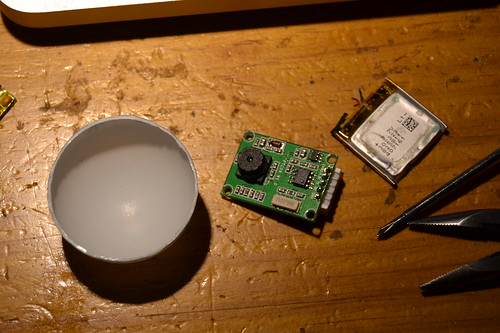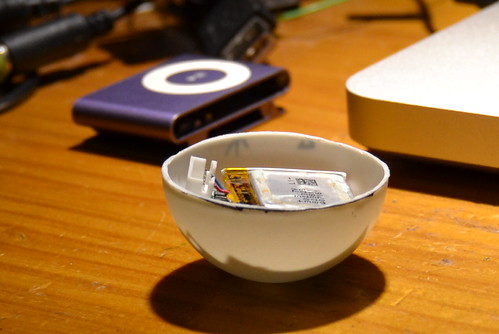I’ve thinking about registering for the Pongsat program. For those who doesn’t know them, Pongsat is a space program for students and everyone insterested on doing some space research for free. The defined experiments are to be fit inside a pingpong ball so they send as many as they can, and before flight balls are sent back to their creators so data can be retrieved.
I came across with some experiments I want to make in such travel:
- Pressure: I want to measure pressure as the pongsat travels to the skys. Meassuring pressure you can calculate your altitude.
- Temperature: let’s see how gets down to then rise up a bit.
- Accelerometer: I think that should be interesting to see the acceleration through it’s travel. Also, gravity should decrease as the pongsat gains altitude. At 30Km should be 9.7m/s^2 (about 0.9% less).
- Camera: I’ll be using a small VGA serial camera to take high altitude pictures.
All collected data and pictures will be stored in a micro SD card for further analysis. Also RTC chip (real time clock) is mandatory to keep track on timestamp of data.
To save power for all the travel I’ll to use an LDO to cut power from camera, SD card and sensors, and then use of deep sleep functions on atmega328p to powerdown the microcontroller. Every 10 or maybe 5 seconds, wake up microcontroler, wake up sdcard, camera and sensors, take a snap, sensors reading, store everything on SD card, then sleep another 10 secs. I’ll be using ATmega328p running 3.3v and 8MHz as uController.
As the main function of the ball is to take pictures from the travel I decided to name it Mad-Eye. Here are some pictures of firsts internal space fit test to see how much room can be use for electronics:

Mad-Eye Pongsat camera and battery

Mad-Eye camera and battery fit test

Mad-Eye fit test, side view














